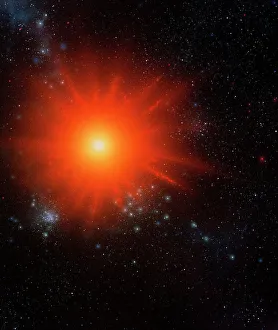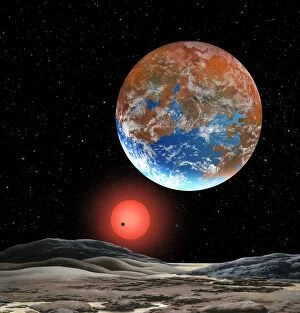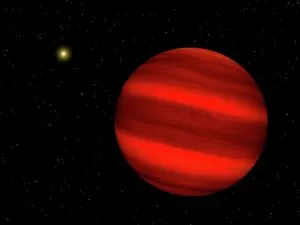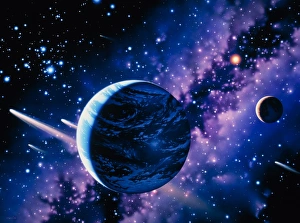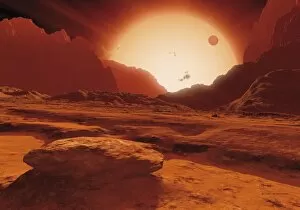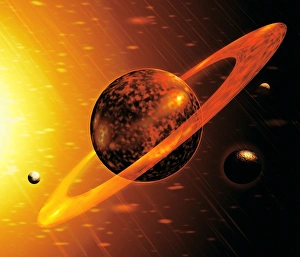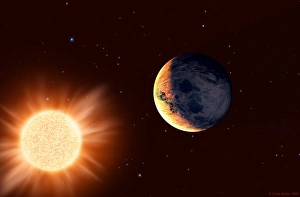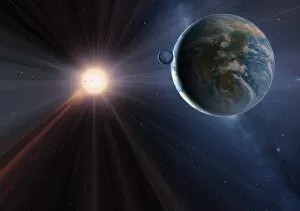Red Dwarf Collection
"Exploring the Cosmos: Unveiling the Mysteries of Red Dwarf" In a vast universe filled with wonders, red dwarf stars shine brightly as celestial marvels
All Professionally Made to Order for Quick Shipping
"Exploring the Cosmos: Unveiling the Mysteries of Red Dwarf" In a vast universe filled with wonders, red dwarf stars shine brightly as celestial marvels. These small and cool stellar bodies captivate astronomers' attention, offering glimpses into distant worlds beyond our own. Among these captivating discoveries is an awe-inspiring super-Earth extrasolar planet, depicted in stunning artwork C015 / 0800. Nestled within the Gliese 229 system, this enigmatic world beckons us to unravel its secrets. Venturing further into uncharted territories, we encounter another Earthlike planet known as Gliese 581 c. Its resemblance to our beloved blue marble sparks curiosity about potential life forms thriving on its surface—a tantalizing possibility captured in mesmerizing artwork. But not all cosmic encounters are serene; some unveil darker realms lurking amidst the cosmos. Enter Nemesis star—an ominous presence portrayed through striking artwork that reminds us of the mysteries yet to be unraveled in deep space. As we delve deeper into understanding different star types, breathtaking illustrations guide us through their diverse characteristics and formations—each one a unique testament to nature's grandeur. Witnessing a sunset on Gliese 667 Cc planet evokes a sense of tranquility amidst unfamiliar landscapes—a moment frozen in time beautifully depicted in artwork C014 / 5046. It serves as a reminder that even light-years away from home, beauty can be found where least expected. The exploration doesn't end there; alien beings come alive through intricate computer-generated artistry—conjuring visions of extraterrestrial lifeforms that might exist beyond our comprehension. Comets passing by Earth offer fleeting glimpses into cosmic ballets choreographed by gravity itself—an enchanting spectacle immortalized through stunning artistic renditions that leave us awestruck at nature's dance across the heavens.

